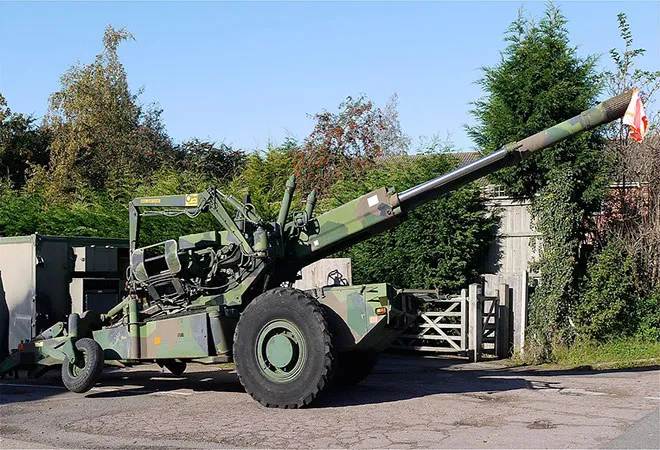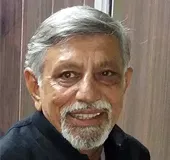
The artillery has always been a battle winning factor. It possesses the ability to strike deep with great accuracy and cause maximum damage to even well-constructed shelters and bunkers. This was evident in Kargil when it pulverised enemy bunkers on hill tops, making the task of assaulting infantry easier. However, Indian artillery for long, lacked equipment with increased calibre and range thus reducing its ability to shape the battlefield and cause large scale destruction.
Other than the Bofors inducted in 1984, it possessed the 130 mm guns inducted in the 1960’s and 70’s and the 105 mm, home developed and manufactured field guns of the 1980’s. The 130 lacked the ability to fire in mountains and the 105 lacked range. Both guns fired limited type of shells with lesser level of fragmentation. The Bofors scandal was the basic reason behind restricting modernisation of the artillery.
The ghost of the Bofors was visible to AK Anthony behind every door all through his tenure as the defence minister in the Manmohan Singh government. He was so spooked that he cancelled ‘Request for Proposals’ soon after they were issued and on one occasion even ongoing trials. Every time anyone mentioned kickbacks, procurement deals were scrapped. The biggest loser all through his tenure was the artillery, which post the acquisition of Bofors, remained way behind in desired capabilities.
Even within the artillery, there was no consensus of the calibre of the gun to be purchased. The discussion revolved around 39, 45 and 52 calibres.
The calibre implies the length of the barrel, which is one of the factors to determine the maximum range of the equipment. Finally, after a gap of 30 years, the artillery is now being modernised. In a ceremony this week in Deolali, the home of the gunners, in the presence of the defence minister and the army chief, the artillery will induct two new guns.
The guns being inducted are the K9 Vajra and the M777. Both are of 155 mm, with the Vajra being a tracked self-propelled gun and the M777 a light weight howitzer which can be carried underslung by a helicopter. Both guns can fire upto a range of 30 kms. The quantity being inducted are 100 of the Vajra and 145 of the M777. The Vajra is 52 calibre, while the M777 is 39.
The Vajra is a variant of the South Korean K9 Thunder and is being manufactured by L and T defence. 10 guns were bought from South Korea and the balance are being manufactured in the company’s plant near Pune. Twenty-five M777 guns would be imported in fly-away condition and the balance 120 would be manufactured by Mahindra Defence.
The Vajra is destined for the plains and deserts and would form part of the strike corps. Being self-propelled they would operate alongside armoured formations and provide much needed firepower. For a long time, these formations lacked requisite firepower with matching mobility. There were attempts at mix and match including mounting the 130 mm barrel on an Arjun tank chassis, but all these had limited success.
The M777 is ideal for the mountains where with its light weight, better manoeuvrability and helicopter-portability, it can be deployed faster and far more forward enhancing the engagement range. Thus, they would enhance firepower in a region where spread of deployment restricts fire support to troops holding ground in the defensive role.
There are other modernisation programmes in the pipeline for the artillery. Last week, ordnance factories were given a contract for upgrading 300 vintage 130mm guns to 155 mm/ 45 calibre. These would then equip 15 artillery regiments. This upgrading is to be completed by 2022. The upgradation involved changing the barrel, adding new sighting and loading systems, enabling better accuracy and enhanced rate of fire.
The upgrading costs 70 lakhs per gun and is one-fifth the cost of a new piece. Once upgraded, the range of the gun would increase from its present 29 Kms to 39 Kms. Its lethality would also increase by 300% as the new shell would have 8 kg of TNT as compared to 3.4 earlier. These would be employed in the plains and desert sectors.
Simultaneously trials are on for the Dhanush artillery guns, the Indian version of the Bofors, based on the transfer of technology from the original manufacturer, AB Bofors. These are also 155 mm/ 45 calibre. In case the trials are successful and there are no major shortcomings, firm orders would be placed for 300 Guns.
In addition, the Advanced Towed Artillery Gun System (ATAGS) is also in the process of different phases of trials. This is another 155 mm/ 52 Calibre gun system being developed jointly by the DRDO in collaboration with the private sector. The private concerns involved are Bharat Forge, Tata power strategic engineering division and Mahindra defence naval systems. The gun during its earlier trials had set a world record of 48.074 Kms for a gun of its calibre. This has recently been surpassed by a new weapon system being developed in the US. An initial order for 40 is expected.
The latest to commence trials is the Mounted Gun System, developed by the Gun Carriage Factory, Jabalpur. It was first displayed at the Defexpo in Chennai in April. The system is also 155mm/ 52 calibre, mounted on a multi-wheeled truck and can be deployed and prepared for firing much faster. It has a range of 40 Kms.
How many of the coming gun systems would the artillery purchase is yet to be confirmed. If not in service within the country, these could always be exported enhancing India’s military exports.
The artillery, which for decades was languishing behind in firepower and capability, is now witnessing a boom. All the guns now either under trials, procurement or development come under the ‘make in India’ or ‘made in India’ category. Opening doors to the private sector has witnessed a change in the artillery profile and could also be similar for all other equipment.
Pushing the DRDO into a corner compelled them to seek collaboration with the private sector for better technology. It has succeeded, though pitfalls and failures have occurred during the trials. These would be rectified, and the artillery would obtain new guns, which it had been seeking for decades.
Within a few years, the artillery with long range guns, modern rocket systems as also better target acquisition and surveillance systems, including UAVs and drones, would enable better shaping and domination of the battlefield.
Long range missiles would remain under the strategic command. This could alter response to ceasefire violations by Pakistan. With longer ranges and integrated target acquisition capabilities, the ability to target Pakistani posts, bases and terrorist camps in greater depth would exist. With better ammunition, possessing higher fragmentation, the damage would also be far more devastating.
Finally, the battle winning arm would now come of age and be able to change the nature and quantum of support to the assaulting forces. It would also change the force ratio along the LoC and cause more damage to Pakistan if it attempts any misadventures. The induction of these guns would also compel Pakistan to go into an arms race, which it can ill afford.
The views expressed above belong to the author(s). ORF research and analyses now available on Telegram! Click here to access our curated content — blogs, longforms and interviews.



 The artillery has always been a battle winning factor. It possesses the ability to strike deep with great accuracy and cause maximum damage to even well-constructed shelters and bunkers. This was evident in Kargil when it pulverised enemy bunkers on hill tops, making the task of assaulting infantry easier. However, Indian artillery for long, lacked equipment with increased calibre and range thus reducing its ability to shape the battlefield and cause large scale destruction.
The artillery has always been a battle winning factor. It possesses the ability to strike deep with great accuracy and cause maximum damage to even well-constructed shelters and bunkers. This was evident in Kargil when it pulverised enemy bunkers on hill tops, making the task of assaulting infantry easier. However, Indian artillery for long, lacked equipment with increased calibre and range thus reducing its ability to shape the battlefield and cause large scale destruction.
 PREV
PREV


